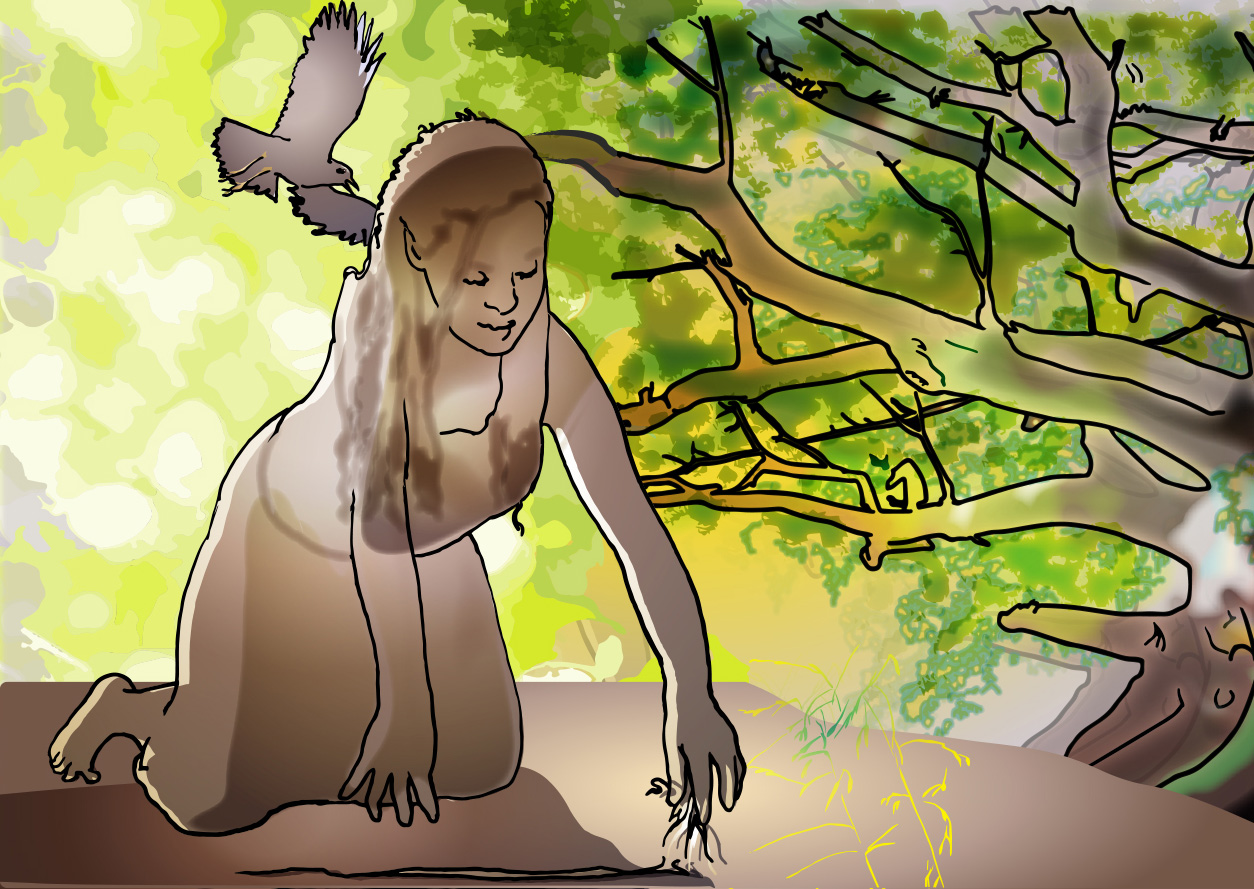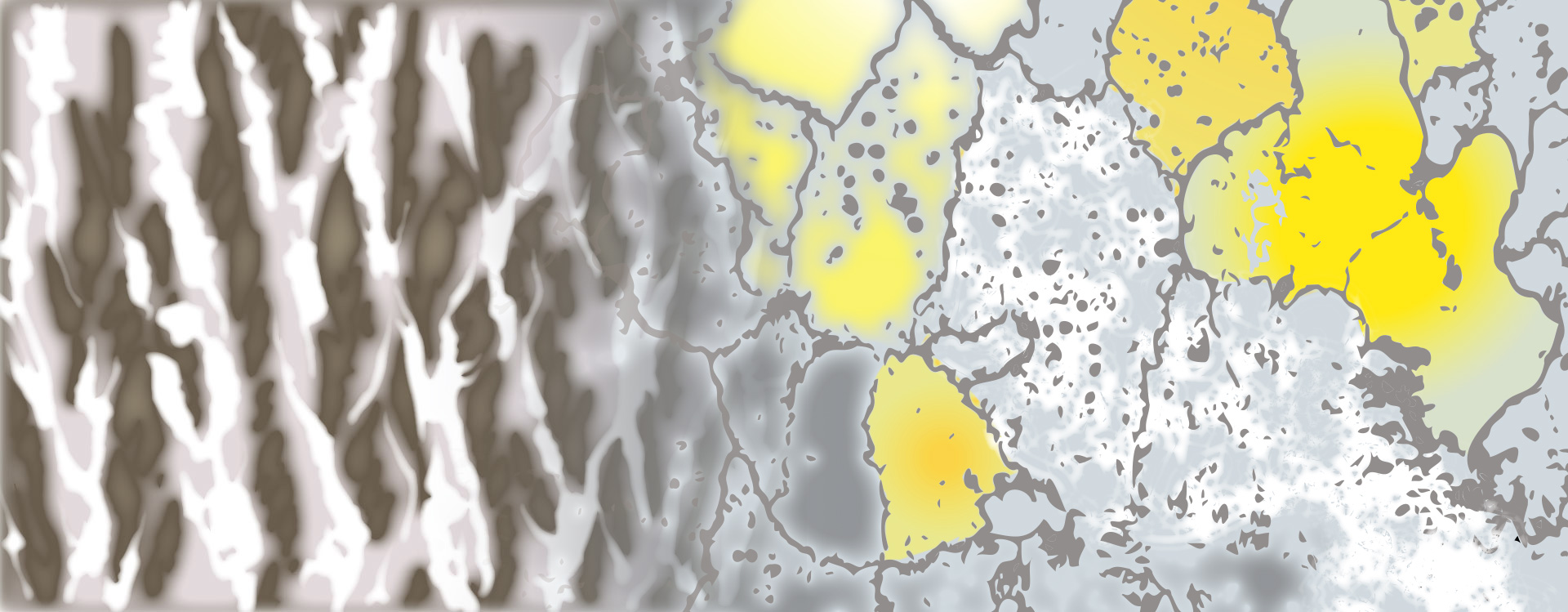
B L N F S H D T C M G P R A O U E I


chraoibh an t-saoghail 's
do fhriamhaichean san àirde tuath,
tobar draoidheachd, tobar eòlais,
tobar dàin thu,
nach d’rinn laoidh de chòmhstri
no rabhd de chleas,
do bhuadhan àraid,
gum b’fheàrr le nathair teine
seach do thaigh,
gun togar leigheas
leis na h-eòlaichean
’o d’ chruth
chraoibh an t-saoghail
mar a phòs thu
cuan is talamh,
aìle ’s lasair,
mar a rinn thu
cromag, sleagh no ràmh,
’s có ’n draoidh a chunnaic thu
mar sgiath, is
mar a sheas thu,
craobh ameasg nan craobh
world tree, whose
roots are in the north,
druid well, well of knowledge,
well of fate, you
made no hymn from warfare
nor doggerel from play
your special qualities,
that snakes should prefer fire
to shelter in your leaves,
that healing can be drawn
by those who know
from all you are
world tree
the way you married
earth and ocean,
air and flame,
and how you made
crook, spear or oar,
and who’s the druid saw you
as a wing, and
how you stood
a tree among the trees


Ash is one of the most beneficial of all trees. It is a light-bringer, flickering light down through its bright green foliage like a prism, creating a myriads of reflections
As well as reaching strongly up into the sky, the long grip of the ash root system spreads far out through a massive underground web (hence planted well away from houses and crops) and these roots, together with the large amount of rich humus-producing leaves it sheds every year, help ventilate the soil and give it its reputation as the helping tree.

Although found throughout Europe, ash prefers the conditions of moist air and soil, which makes it especially common in Britain. It prefers well-watered places and grows alongside alder and other water-seeking trees. Fully grown at around a hundred years old, a three hundred year old tree is common, and far older trees are found..

Until more modern antiseptics appeared, the inner side of the bark was a remedy for healing bleeding wounds, as its fresh sap is a disinfectant. Leaves, used inside boots, help tired feet. Hippocrates, a greek physician in 400 BC, used ash to cure rheumatism and ever since the Middle Ages, herbal books have described the healing properties of its bark, leaves and seeds to strengthen and help de-toxify the body.

Ash is often described as having power over water and Celtic boatbuilders always used ash wood in making boats. For his Atlantic crossing in a hide boat called 'Brendan', Tim Severin specifically used ash beams taken from the 'north side of the tree' since the wood on this side is very rich in lignin and able to bend. And during the Clearances of the nineteenth century, migrant Gaels often carried pieces of ash over the Atlantic as protection
Ash has long been accepted as benevolent to newborn life and sap of the tree was given to
newly born
babies in Scotland, while young twigs were put on the birth fire, 'in honour of the tree and as a
prayer
made for the newborn child.' (Fife 1994).
In Ireland and Scotland, ash and hawthorn have long been the trees most commonly found at sacred
springs, or
clootie wells (clothes wells) for these wishes to come true.


Flowering from April to May, before its leaves unfold, ash has catkins with large single blossoms. These develop into flat, winged nutlets called 'keys', which usually hang in brown bunches throughout the winter, before being scattered by the March winds. the seeds, the ‘ash-keys’, are a remedy for flatulence, and used in cooking as capers.
Ash wood is very strong and used for countless tools that include spears, bows, arrows, tool handles, cartwheels, cricket bats, building, lumber, walking-sticks (sometimes called ‘ash-plants'). Its bark is a poultice for adder bites and medicinally good for fevers while the leaves are a laxative, as well as having a reputation for curing warts. It is tragic therefore that the modern disease of 'ash die-back' now kills millions of these remarkable healing trees every year.

In addition to Brigit, the ash tree has several related gods and goddesses. Rhiannon appears in the Mabinogion, where she is made to carry people like a horse for several years in order to protect her child from a spell. And there is Epona, the celtic horse-goddess.

Epona (from which comes our word pony) appears in the Uffington horse, a carving on the chalk downs of Oxfordshire made over 3,000 years ago.
Then there is the ancient World Tree, Yggdrasil, that was originally a Yew and became the 'World Ash' in Norse myth, and Odin's spear was specifically made of ash.

As well as Odin, other similar names to Nuin are Nuada of the Silver Hand, a king of the Tuatha de Danaan, and Nodens, who had a large sanctuary on the River Severn in 500AD. Both their names mean ‘cloud-maker’. ‘Askr Yggr-drasill’ (’the horse of Yggr’), or Sleipnir, was Odin’s eight-legged horse. Snakes fear ash and will not crawl over its wood. Traditionally the yule-log. Passing people through a cleft of pollarded ash was a cure for a hernia.

Lichens on ash seem to draw maps, with colours peculiar to the 'cloud-maker'. Various customs in England and on the continent were based on the tree's ability to heal. In Sweden, the ash was one of the guardian trees (Varträd), of the farm and the ash-woman (Askafroa) was provided with regular offerings of milk or beer.
